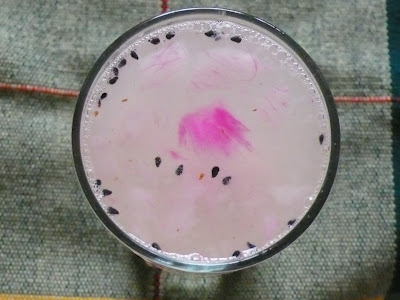It's pitahaya season. Being a northerner I hadn't been aware of this fruit, also known in English as dragon fruit, until I moved to Yucatán. When I first saw a pile of red and green, splotchy, fairly unappetizing looking pitahaya in a small Mérida restaurant I was not tempted. However when eventually I took a sip of agua de pitahaya I was hooked on this wonderful fruit.

Mmmmmm. Just the thought of taking a long drink of sweet, cooling pitahaya juice on a hot summer afternoon makes my mouth water. It's delicate, subtly sweet, and as it is often served, mixed with a few drops of lemon juice and poured over ice, it is a truly native Yucatecan refreshment.


Pitahaya is a member of the cactus family, and grows over rocks, walls, and on large shrubs and trees. There are three varieties, red, yellow and pink. Pink seems to be the variety most seen around Yucatán. The plant can extend along the ground, but continually sends shoots upward in search of support and sunlight. A stem that encounters a solid vertical object promptly sprouts clinging roots and grows upward. In my yard pitahaya grows up the stone walls, as seen above, and also has climbed and entwined itself with a large nopal cactus plant.
Propagating pitahaya is easy. A section broken off and set on the ground will send out new roots and branches. If the plant finds support and plenty of sunlight, it will begin to flower and produce fruit within a couple of years. I planted some sprigs of pitahaya about three years ago and it first flowered last year. Pitahaya usually produces from June through August. This year I have had lots of fruit and the plants are still flowering in late August, so I can expect to enjoy pitahaya through September.


A pitahaya flower is large, measuring at least as broad across as my hand open with fingers widely spread. It also is very short-lived, blooming one evening, reaching full splendor overnight, and beginning to wilt as the morning sun warms the air. White pitahaya flowers set aglow by a full moon are a fantastic midnight sight. Bats are the primary pollinators, although in the morning as the petals fade, bees also can be seen getting their fill.
Timing is extremely critical. If it rains during the critical flowering and early fruit-forming stage, the fruit will rot. As pitahaya begins to mature, it is a favorite food of insects and various birds, which make small holes order to eat the interior portions of the fruit. Once perforated, the fruit begins to spoil.


When mature, pitahaya is picked promptly and can be peeled or cut in half and the heart scooped out. I love it chilled as part of a fruit salad, but my favorite way to enjoy pitahaya is as a drink. The heart of one fruit is mashed (not blended) in a glass of water. A little sugar and lemon juice are added. Agua de pitahaya is a chunky concoction which is both sipped and chewed,

and for this reason is usually served with a straw and a long spoon. The seeds add texture and crunch in much the way poppy seeds do to breads or muffins. I also have heard that pitahaya can be cooked and used in a variety of dishes. I have yet to try this, but am looking for recipes.
Reportedly pitahaya is high in phosphorus, Vitamin C, iron and calcium, and the fats contained in the seeds aid in digestion.
Pitahaya is a tasty and healthy delicacy available in the gardens and markets of Yucatán this time of year. It is an unusual plant, one that is interesting to observe in the garden and a treat to consume during the summer growing season. I love this fruit. I would be missing a great pleasure still had I not overcome my initial reluctance to try it.













